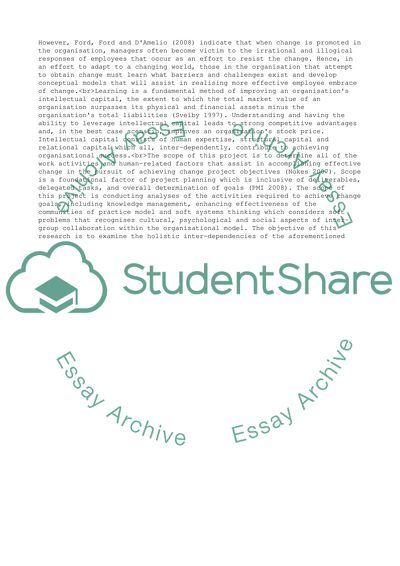Cite this document
(Task: The only way to cope with a changing world is to keep learning Essay, n.d.)
Task: The only way to cope with a changing world is to keep learning Essay. https://studentshare.org/management/1827999-task-the-only-way-to-cope-with-a-changing-world-is-to-keep-learning-dixon-1998-critically-discuss-the-dixon-quote-in-relation-to-the-way-that-sst-can-develop-an-organisations-intellectual-capital
Task: The only way to cope with a changing world is to keep learning Essay. https://studentshare.org/management/1827999-task-the-only-way-to-cope-with-a-changing-world-is-to-keep-learning-dixon-1998-critically-discuss-the-dixon-quote-in-relation-to-the-way-that-sst-can-develop-an-organisations-intellectual-capital
(Task: The Only Way to Cope With a Changing World Is to Keep Learning Essay)
Task: The Only Way to Cope With a Changing World Is to Keep Learning Essay. https://studentshare.org/management/1827999-task-the-only-way-to-cope-with-a-changing-world-is-to-keep-learning-dixon-1998-critically-discuss-the-dixon-quote-in-relation-to-the-way-that-sst-can-develop-an-organisations-intellectual-capital.
Task: The Only Way to Cope With a Changing World Is to Keep Learning Essay. https://studentshare.org/management/1827999-task-the-only-way-to-cope-with-a-changing-world-is-to-keep-learning-dixon-1998-critically-discuss-the-dixon-quote-in-relation-to-the-way-that-sst-can-develop-an-organisations-intellectual-capital.
“Task: The Only Way to Cope With a Changing World Is to Keep Learning Essay”. https://studentshare.org/management/1827999-task-the-only-way-to-cope-with-a-changing-world-is-to-keep-learning-dixon-1998-critically-discuss-the-dixon-quote-in-relation-to-the-way-that-sst-can-develop-an-organisations-intellectual-capital.


